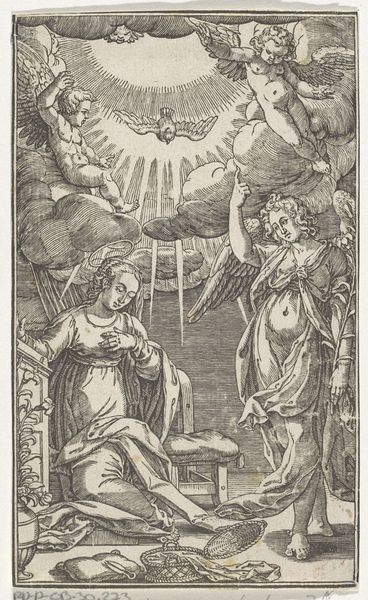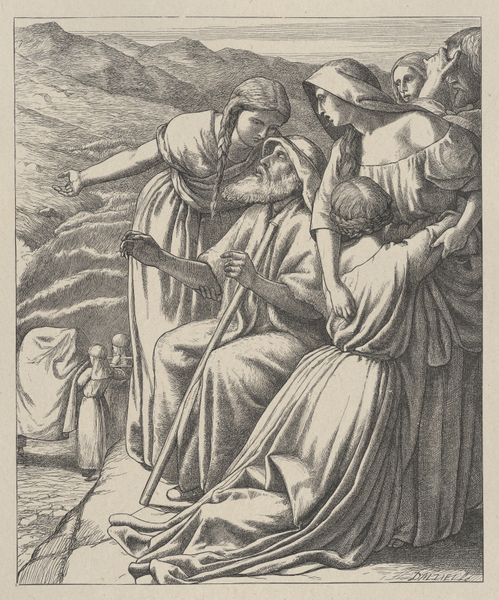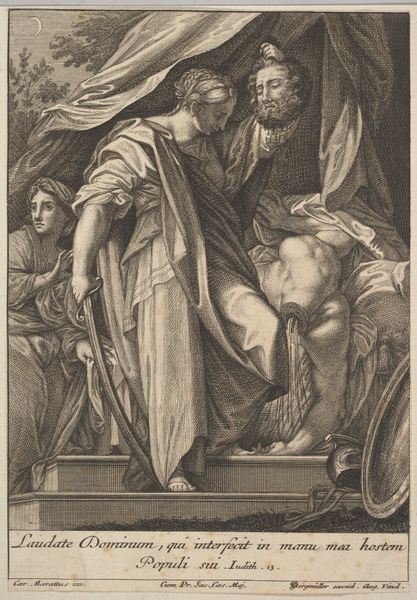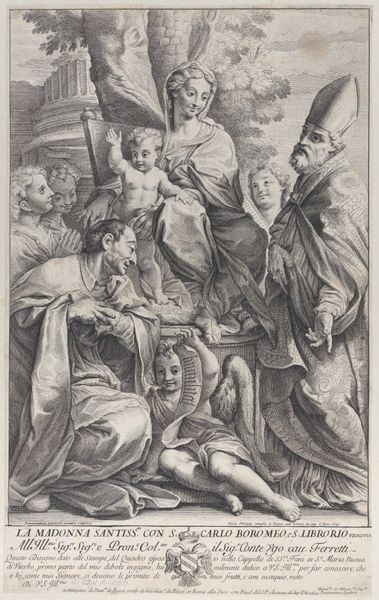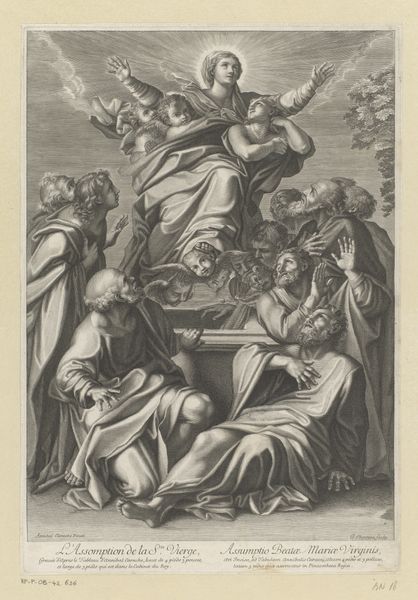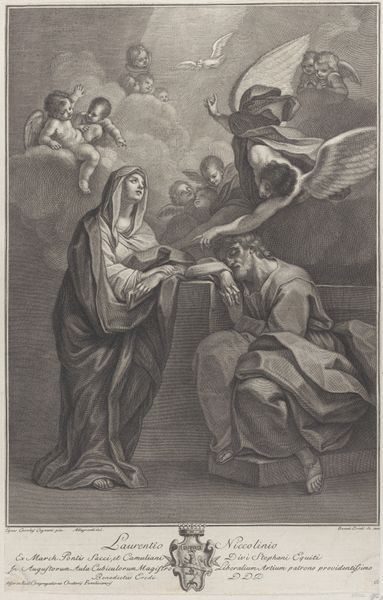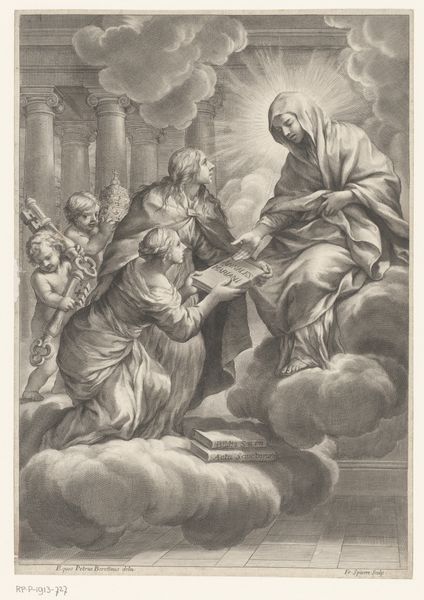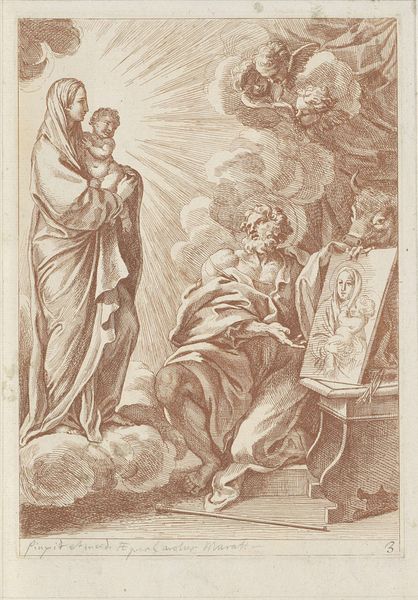
print, engraving
#
baroque
# print
#
surrealism
#
history-painting
#
engraving
Dimensions: height 266 mm, width 217 mm
Copyright: Rijks Museum: Open Domain
Curator: Looking at "Annunciatie", made in 1676 by Jan van Somer, you immediately sense the divine weight of the moment, don't you? The scene depicts the Annunciation. Editor: Yes, there’s something heavy about it, but almost from the process itself. It being an engraving – think of the labor! All those precisely etched lines working to create such a revered scene. I notice that even the textures of the fabrics are conveyed through detailed scoring. Curator: Exactly. And that brings to mind its context. Engravings like this one played a critical role in disseminating religious imagery to a wider public. The relatively reproducible medium allowed such imagery to reach homes and smaller congregations. Editor: So, in essence, its inherent material was tied to making visible the very ideas it pictures – this engraving itself becoming the vessel for the Word! I wonder how the printmaking trade regulated imagery like this. Did workshops align themselves politically or religiously? Curator: Most certainly. The imagery held a particular political weight; powerful, widespread and readily available. And although not vibrant, its very design emulated the Baroque era with intense dramatic features. Take for example the Holy Spirit's dynamic position, or even Mary’s physical recoil. All of it makes you feel something. Editor: It certainly makes me think of how labor shaped our understanding of faith, and even our access to it! The social impact of printmaking has democratized it. Something truly special! Curator: I'll agree with you there. It also encourages us to contemplate not only the narrative moment of revelation but also how it circulates within society and affects those viewing. Editor: Precisely. When examining such materials of distribution and accessibility, you question the hands behind its manufacture; it causes us to evaluate both devotion and dissemination.
Comments
No comments
Be the first to comment and join the conversation on the ultimate creative platform.



